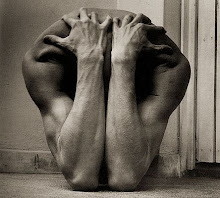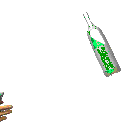Ancient and Modern Absinthe
The Origins of Ancient and Modern Absinthe
Absinthe was considered a vivifying elixir long before it could be ordered in a cafe. When Madame de Coulanges, one of the leading ladies of the seventeenth-century French court, became ill, she was prescribed a preparation containing wormwood. When it calmed her stomach, she wrote to Madame de Sevigne, " My little absinthe is the remedy for all diseases."
 Hippocrates recommended absinthe for juandice and rheumatism. Ancient absinthe was different from the liquor that Verlaine and Picasso imbibed, generally being wormwood leaves soaked in wine or spirits. Most likely the word absinthe derives from the Greek word apsinthion, which means " undrinkable " presumably because of its bitter taste. Pythagoras recommended wormwood soaked in wine to aid labor in childbirth. Hippocrates prescribed it for jaundice, rheumatism, anemia, and menstrual pains. The Roman scholar Pliny the Elder called it apsinthium in the first century A.D. and noted that it was customary for the champion in chariot races to drink a cup of absinthe leaves soaked in wine to remind him that even glory has its bitter side. He also recommended it as an elixir of youth and as a cure for bad breath... Over the centuries, however, wormwood drinks moved away from being just bitter medicine. Independent distilleries were producing absinthe made from the dried leaves of wormwood steeped in equal parts of malmsey wine and " burning water thrice distilled." The " Purl " of Tudor England was compounded of ale or hot beer and wormwood, and although it was mainly popular with the working classes, Samuel Pepys reported in his famous diary that he had enjoyed several glasses of wormwood ale one night " in a little house...which doubtless was a bawdy house." These dusty tales convey something of the mystique surrounding absinthe; one imagines a flask of it sitting beside the alchemist's crocodile and the mandrake root. Absinthe incorporated Olympian legends of debauch and rather downhome peasant notions. Modern absinthe allegedly was invented in 1792 by an extraordinary French doctor called Pierre Ordinaire, who fled France's revolution to settle in Couvet, a small village in western Switzerland. On his periodic journeys by horseback, Dr. Ordinaire is said to have discovered the plant Artemisia absinthium growing wild in the hills of the Val-de-Travers region. Like most country doctors, he prepared his own remedies, and being acquainted with absinthe's use in ancient times, he began experimenting with it.
Hippocrates recommended absinthe for juandice and rheumatism. Ancient absinthe was different from the liquor that Verlaine and Picasso imbibed, generally being wormwood leaves soaked in wine or spirits. Most likely the word absinthe derives from the Greek word apsinthion, which means " undrinkable " presumably because of its bitter taste. Pythagoras recommended wormwood soaked in wine to aid labor in childbirth. Hippocrates prescribed it for jaundice, rheumatism, anemia, and menstrual pains. The Roman scholar Pliny the Elder called it apsinthium in the first century A.D. and noted that it was customary for the champion in chariot races to drink a cup of absinthe leaves soaked in wine to remind him that even glory has its bitter side. He also recommended it as an elixir of youth and as a cure for bad breath... Over the centuries, however, wormwood drinks moved away from being just bitter medicine. Independent distilleries were producing absinthe made from the dried leaves of wormwood steeped in equal parts of malmsey wine and " burning water thrice distilled." The " Purl " of Tudor England was compounded of ale or hot beer and wormwood, and although it was mainly popular with the working classes, Samuel Pepys reported in his famous diary that he had enjoyed several glasses of wormwood ale one night " in a little house...which doubtless was a bawdy house." These dusty tales convey something of the mystique surrounding absinthe; one imagines a flask of it sitting beside the alchemist's crocodile and the mandrake root. Absinthe incorporated Olympian legends of debauch and rather downhome peasant notions. Modern absinthe allegedly was invented in 1792 by an extraordinary French doctor called Pierre Ordinaire, who fled France's revolution to settle in Couvet, a small village in western Switzerland. On his periodic journeys by horseback, Dr. Ordinaire is said to have discovered the plant Artemisia absinthium growing wild in the hills of the Val-de-Travers region. Like most country doctors, he prepared his own remedies, and being acquainted with absinthe's use in ancient times, he began experimenting with it.
 Dr. Ordinaire's recipe probably included the following herbs: wormwood, anise (Pimpinella anisum), hyssop (Hyssopus officinalis), dittany (Dictamnus albus), sweet flag (Acorus calamus), Melissa (a type of mint), and varying amounts of coriander, veronica, chamomile, parsley, and even spinach. The 136 proof elixir produced in his sixteen liter still became popular as a cure-all in town and early on was nicknamed La Fée Verte. On his death, he supposedly left his secret recipe to two Henriod sisters from Couvet, who then left it to a visiting Frenchman, Major Dubied, whose son-in-law was named Pernod, and the rest is history.
Dr. Ordinaire's recipe probably included the following herbs: wormwood, anise (Pimpinella anisum), hyssop (Hyssopus officinalis), dittany (Dictamnus albus), sweet flag (Acorus calamus), Melissa (a type of mint), and varying amounts of coriander, veronica, chamomile, parsley, and even spinach. The 136 proof elixir produced in his sixteen liter still became popular as a cure-all in town and early on was nicknamed La Fée Verte. On his death, he supposedly left his secret recipe to two Henriod sisters from Couvet, who then left it to a visiting Frenchman, Major Dubied, whose son-in-law was named Pernod, and the rest is history.

Absinthe comes to America.
Absinthe soon found its way to the Little Paris of North America, New Orleans. The drink, which was spelled absynthe in an 1837 New Orleans liquor advertisement, enjoyed a vogue under such brand names as Green Opal, Herbsaint, and Milky Way. (Today, one can still find a version of this made without wormwood and marketed under the name Herb Sainte.) Of all the ancient buildings in New Orleans's famed French Quarter, none has been more glorified by drunks and postcard photographers alike than a square, plaster and brick structure at the corner of Bourbon and Bienville streets. " The Old Absinthe House " with its scarred cypress bar was visited by many famous people: Oscar Wilde, Lafcadio Hearn, William Thackeray, Walt Whitman, Aaron Burr, and General P.G.T. Beauregard are just a few of the many who relaxed over a green absinthe in this shady retreat. Alexis, Grand Duke of all Russians, drank here, and the chairs once creaked under William Howard Taft's presidential bulk. The great O. Henry was just a struggling newspaperman named William Sidney Porter when he came to dream over an absinthe frappé.I will free you first from burning thirst
That is born of a night of the bowl,
Like a sun 'twill rise through the inky skies
That so heavily hang o'er your souls.
At the first cool sip on your fevered lip
You determine to live through the day,
Life's again worth while as with a dawining smile
You imbibe your absinthe frappé.









0 Comments:
Post a Comment
<< Home